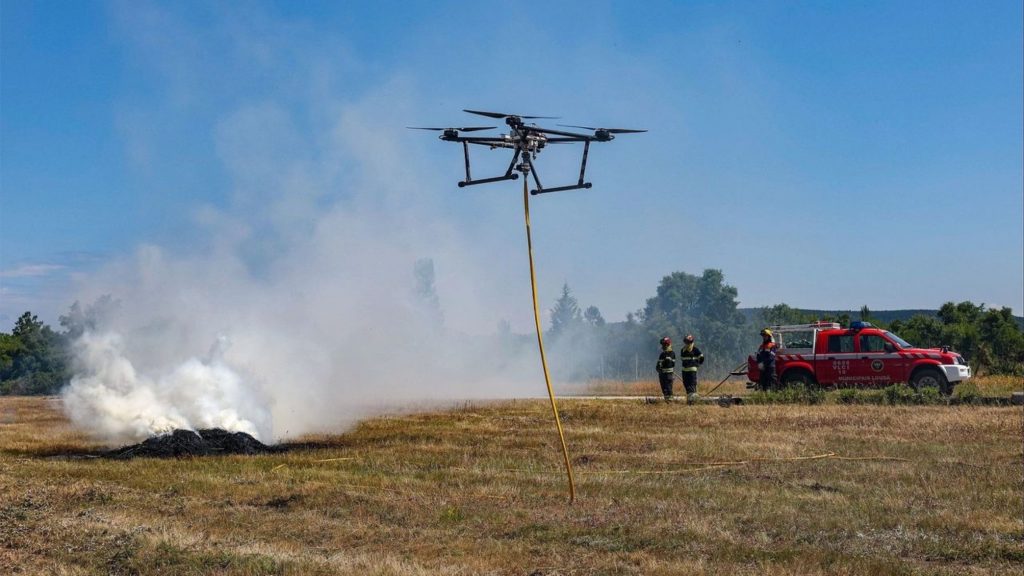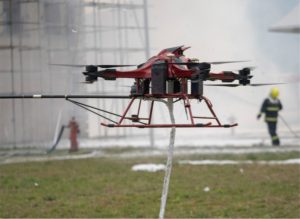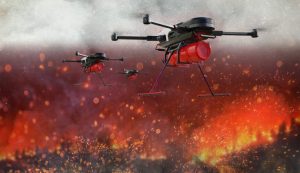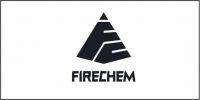 In the ever-evolving landscape of emergency response, the integration of adaptive drones is revolutionizing firefighting strategies. These cutting-edge drones, equipped with advanced technologies, are reshaping situational awareness and operational efficiency in ways previously unimaginable. This article explores the transformative impact of adaptive firefighting drones and how they are enhancing situational awareness to save lives and protect communities.
In the ever-evolving landscape of emergency response, the integration of adaptive drones is revolutionizing firefighting strategies. These cutting-edge drones, equipped with advanced technologies, are reshaping situational awareness and operational efficiency in ways previously unimaginable. This article explores the transformative impact of adaptive firefighting drones and how they are enhancing situational awareness to save lives and protect communities.
- Dynamic Sensor Capabilities:
 Adaptive firefighting drones go beyond traditional aerial surveillance by featuring dynamic sensor capabilities. With advanced sensors such as infrared cameras, gas detectors, and environmental sensors, these drones provide comprehensive data on fire dynamics, air quality, and potential hazards. This wealth of information empowers firefighting teams with a nuanced understanding of the emergency environment.
Adaptive firefighting drones go beyond traditional aerial surveillance by featuring dynamic sensor capabilities. With advanced sensors such as infrared cameras, gas detectors, and environmental sensors, these drones provide comprehensive data on fire dynamics, air quality, and potential hazards. This wealth of information empowers firefighting teams with a nuanced understanding of the emergency environment. - Artificial Intelligence Integration: The incorporation of artificial intelligence (AI) algorithms elevates adaptive drones to a new level of intelligence. AI enables real-time data analysis, allowing drones to identify critical patterns in fire behavior, predict its trajectory, and assess structural risks. This predictive capability enhances preemptive decision-making, enabling firefighters to stay ahead of the evolving emergency.
- Swarm Intelligence for Rapid Response: Adaptive drones leverage swarm intelligence, a collective behavior model inspired by nature. Working in unison, these drones can cover vast areas rapidly, sharing data and collaborating on tasks. This swarm capability enhances the speed of response, enabling firefighters to deploy resources more efficiently and address emerging challenges in real-time.
- Autonomous Navigation and Mapping: Equipped with autonomous navigation systems, adaptive drones can navigate complex environments without constant human intervention. This autonomy is coupled with advanced mapping capabilities, allowing drones to create detailed, up-to-date maps of the emergency zone. Firefighters can utilize these maps for precise planning and resource allocation.
- Onboard Communication Hubs:
 Acting as communication hubs, adaptive drones facilitate seamless information exchange between ground teams and incident commanders. Through onboard communication systems, drones relay real-time visuals, data, and AI-generated insights. This enhanced communication fosters better coordination, ensuring that firefighting efforts are synchronized and responsive to the dynamic nature of the emergency.
Acting as communication hubs, adaptive drones facilitate seamless information exchange between ground teams and incident commanders. Through onboard communication systems, drones relay real-time visuals, data, and AI-generated insights. This enhanced communication fosters better coordination, ensuring that firefighting efforts are synchronized and responsive to the dynamic nature of the emergency. - Multi-Modal Response Capabilities: Adaptive drones are designed for multi-modal response, adapting to diverse emergency scenarios. Whether combating wildfires, urban fires, or hazardous material incidents, these drones can be configured with specialized payloads. This versatility ensures that firefighting teams have tailored solutions for varying challenges, maximizing the effectiveness of their response.
- Continuous Learning and Improvement: Machine learning algorithms embedded in adaptive drones enable continuous learning from each mission.
By analyzing historical data and mission outcomes, these drones refine their algorithms, adapting to evolving fire dynamics and emergency scenarios. This iterative learning process contributes to ongoing improvements in firefighting strategies.
The integration of adaptive firefighting drones marks a paradigm shift in emergency response capabilities. By enhancing situational awareness through dynamic sensors, AI integration, swarm intelligence, and autonomous navigation, these drones empower firefighting teams to navigate the complexities of modern emergencies.
As technology continues to advance, the synergy between human expertise and adaptive drone capabilities promises to redefine the future of firefighting, ultimately saving lives and safeguarding communities.























































